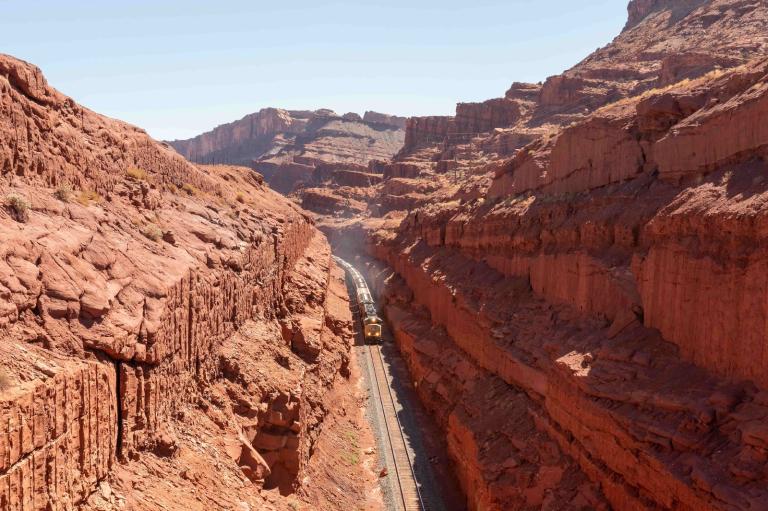I had hoped that the movie 12 Years a Slave, which opened last Friday nationwide, would serve as a fair launching point for discussions I plan to cultivate in this space around racism, environmental justice, and American history. There is much to unpack from the slavery era that helps explain some of our problems today with issues ranging from environmental racism to climate change. I’ll explore that in future blog posts, but meanwhile, I learned a lot from some of the readers of my blog post about the environmental story in 12 Years.
Michael Metivier, an environmental writer in Vermont, contacted me about his own exploration of the history of land and human subjugation in America. He came to these topics in 2010 when he, a white man, found out that he is a descendant of William Benjamin Gould, a black man who escaped slavery in Wilmington, N.C., in 1862, and later joined the Union Navy. Gould’s diaries are considered authoritative texts on the conduct of war and slavery.
Meltivier’s discovery led him to research both the racial and natural history of the place where his great-great-great-grandfather was enslaved — a town that in 1898 would become the location of the only violent overthrow of a local government in U.S. history when white supremacists gunned down freed black and white elected officials.
That kind of violence during both slavery and Reconstruction is a history lesson all too seldom taught by itself. But another commenter brought to my attention the violence done to the land throughout the South. Aaron Joslin, a PhD candidate at the University of Georgia, who teaches about soils and hydrology, commented on Grist’s Facebook page that “the ecological consequences of cotton farming and the slave labor that enabled it … were enormous and inhibit agriculture in the South to this day.”
Offline, Joslin elaborated that slavery-era cotton farming led to massive soil erosion from Virginia to Alabama, rendering much of it unfit to be farmed in the future, or even to be passed down to plantation owners’ children.
“They put no effort into erosion control methods or crop rotations, things which were known but not perfected by their European ancestors,” he told me. “Millions of years of development of the fertile top soil eroded away in roughly 100 years.”
He continued:
The cotton growers did not obey the precept that we inherit the earth from our children, and they destroyed the soil to the point that their children could not use that land in any sort of productive way. So the evil then was much as the evil of corporations is today: Go for as much profit as you can right now and who cares about future generations.
Additionally, the evil to me is that they were completely unconcerned with their place in the ecology of their home, elevating the importance of themselves while devaluing the soil and its ecological functions that they depended on. The androcentric nature of their worldview allowed their greed and self-importance to prevail while undermining their empathy and pursuit of balance and harmony with the world around them.
Joslin’s observations square with those made in the book, Mr. Jefferson’s Lost Cause: Land, Farmers, Slavery, and the Louisiana Purchase, which tells how despite President Thomas Jefferson’s stated advocacy for small farmers, he financed the expansion of the large plantation system, which ended up damaging farmland across the South. It was like if President Obama today campaigned on behalf of food trucks and then instead allowed for increased subsidizing of Big Ag. Oh, wait …
University of Georgia historian Charles Hudson is quoted in Lost Cause explaining slavery-era cotton farming’s impacts in Florida as such: “Erosion and gullying were so great on the cotton plantations in the Tallahassee hills that the land lost as much as three-quarters of its topsoil by 1860.”
The book’s author, Roger Kennedy, director of the Smithsonian National Museum of American History, wrote: “Twentieth-century maps showing the Florida counties requiring the most intense rehabilitation if there were to be any hope of restoring them to productive uses can be overlaid without much adjustment upon earlier maps of the concentration of slaves and the highest percentage of large plantations in 1850.”
All of this is what commenter snailkite was referring to when he commented on my blog how, “The ‘cash crops’ of the antebellum South depleted soils and created an environment in the upper South where landowners displaced smaller farmers … Younger white sons and displaced white small farmers fled to the lower South where cash crops (cotton, rice, indigo, sugar, tobacco) produced large yields on the fresh Native American’s lost lands. Upper South whites sold their enslaved people ‘down the river’ as a source of income, subsidizing the low yields from their own ruined soils.”
It’s what Harvard historian Walter Johnson calls “synthesized racial domination, profit, and economic development.”
Finally, I was pleased to read comments from Paula Duncan, also a noted historian who is studying the impact of slavery on the Americas. In Duncan’s review of 12 Years a Slave for Newsone.com, she wrote about the enslaved who used their knowledge of the natural landscape to escape the plantation system:
These were people who showed that they brought special skills to the plantations; they brought the knowledge from the places where they had lived, where they had been stolen. … With instincts like this to be free, that is why my Maroon ancestors rebelled on slave ships and as soon as they landed.
Those instincts are what led Solomon Northup, whose memoir is the basis for the movie 12 Years a Slave, to once attack one of his overseers, John Tibeats, after being accused of jack-planing wood for a house incorrectly. Throughout the story, Tibeats envies Northup’s resourcefulness with tools and lumber and heckles the slave every time he creates a solution for the plantation staff, who often find themselves clueless in Louisiana’s wild. (In one movie scene, when Northrup builds rafts to navigate some of the deeper swamp areas, Tibeats jealously asks if Northrup is “an engineer or a nigger.”)
In the physical tussle with Tibeats, Northrup is aware that his knowledge and penchant for self-defense might get him killed. Northrup’s thoughts while entangled with his master: “Life is dear to every living thing; the worm that crawls upon the ground will struggle for it. At that moment it was dear to me, enslaved and treated as I was.”
This to me was Northup’s direct refutation of the “survival of the fittest” mentality that drove plantation owners to reduce Africans to property and render them as disposable as the dirt below their feet. Northrup was fighting for his right to live, and to stop the destructive culture that slavery’s proponents were allowing to fester.



